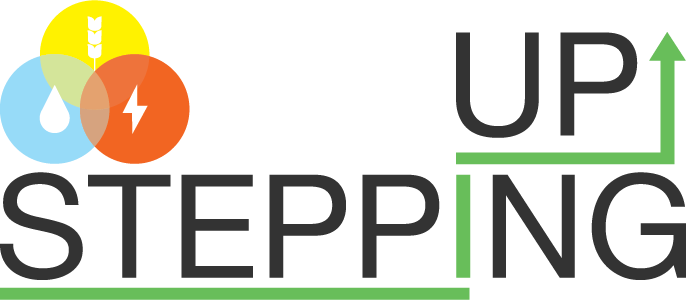You are here
Recovering the Value of Food: the Application of Technology

A previous blog introduced four Water, Energy, Food-nexus (WEF) relevant innovations which will be the focus of Stepping Up. We will use case studies of these innovations to establish an understanding of their potential for scaling up to address WEF-nexus challenges. These innovations are anaerobic digestion, insects as a novel source of protein, and the social as well as technical recovery of value from surplus food. They have all been identified as developments with the potential to alleviate environmental and social burdens across the WEF nexus, and whose impacts under different scenarios merit more attention. This blog series discusses in greater depth the rationale for selecting these particular innovations. The first blog covered anaerobic digestion and the second social recovery of value from surplus food. This, the third, blog covers the technical recovery of value from surplus food.
No method for processing and producing food is perfect, and waste is inevitable. Food waste is broadly defined as any food or drink removed from the supply chain for recovery or disposal. The term refers to both solid food and drinks or liquids. Food waste thus describes both unintentional losses (i.e. spillages, spoilage and contamination) as well as intentional losses (e.g. from overproduction and rejection on aesthetic concerns).
So while food waste typically covers losses from the food supply chain, not all waste is equal: value can be found by exploiting it as a resource, either immediately, or after further processing. For example, potatoes rejected due to aesthetic considerations, and deemed unsalable, may still contain valuable nutrients such as protein which can be extracted for use in animal feed or as an additive to food. At present such nutrients are often landfilled, or composted, or sent to an anaerobic digestion plant for energy recovery to methane. Whilst the latter two do have merits, when aiming for a circular economy it is often the case that keeping a product as close to the point of use is the most sustainable option.
In the previous blog we explored the redirection of surplus food within the supply chain to charities to be fed to people. But what about those by-products that may be considered inedible or have too short a shelf life? It is possible to extract the valuable nutrients from the food for further processing into other edible foodstuffs. The residues from this process then may be sent to composting or anaerobic digestion. The process involves a technical step, by which we differentiate it from the more social focussed work of FareShare as described in the previous blog. In effect it is a method of extracting otherwise wasted value from food stuffs prior to removal from the food chain. Not only might this be a method of reducing the impact of growing those nutrients again in a more edible form, but it could also represent a new revenue stream for the producer, or processor, who might otherwise shoulder the burden of disposing of the waste.
Whilst there are plenty of estimates around the amount of food wasted within the UK, and the proportion that is recaptured through social methods, less information exists for crop residues. This is the name given to parts of plants that are not passed further down the food chain. They can provide a valuable resource, if tapped appropriately. However, it is frequently hampered by waste regulations, as at present there is a careful consideration of how the waste products from food processing must be dealt with. But the point at which the food becomes unusable waste is questionable. In some cases it might be something as simple as passing through a door from a clean to a non-sanitised area: the item itself does not change in that fraction of time, although its reclassification essentially renders it useless.
In terms of the nexus, the challenges are similar to that of social recovery of value, as discussed in the previous blog. To that extent the nexus issues may be regarded as covering much of the same territory: the potential to feed more people by using the same amount of resources; the alteration of waste and food regulations in order to facilitate the re-use of materials. But it is in the method of value recovery that the key difference lies. Being technical in nature, the challenges are significantly different. Instead of searching for alternative methods of giving value to those who are generating the surplus food, here the focus is on exploring the realms of diminishing returns using technological processes. To that end, it may lend itself to larger operations with available capital to spend on specialised equipment.
The development and deployment of technology to address nexus issues will involve a whole set of different drivers and barriers to any social methods, giving a further perspective on more sustainable methods, which Stepping Up research will investigate. In addition, to what extent can the same practices be downscaled or replicated across multiple different industries to capture all of the available value? The issues of waste regulation have been explored, but how far would we be truly willing to push the practice? Is trawling bins of food for the viable nutrients within them still acceptable, not only to regulators, but to those who might eat the outputs? What about scrapings from other people’s plates? Or even the question of proteins taken from a meat source being fed to vegetarians? Or even the effect that the spread of the practice may have on other beneficiaries of the resource, such as anaerobic digestion or insects grown for protein? Some of these issues will also be explored further in the final blog in the series, protein from insects.
Image credits: Blender: cookbookman17 (Flickr link). License: CC BY 2.0
©Steppingup 2024

